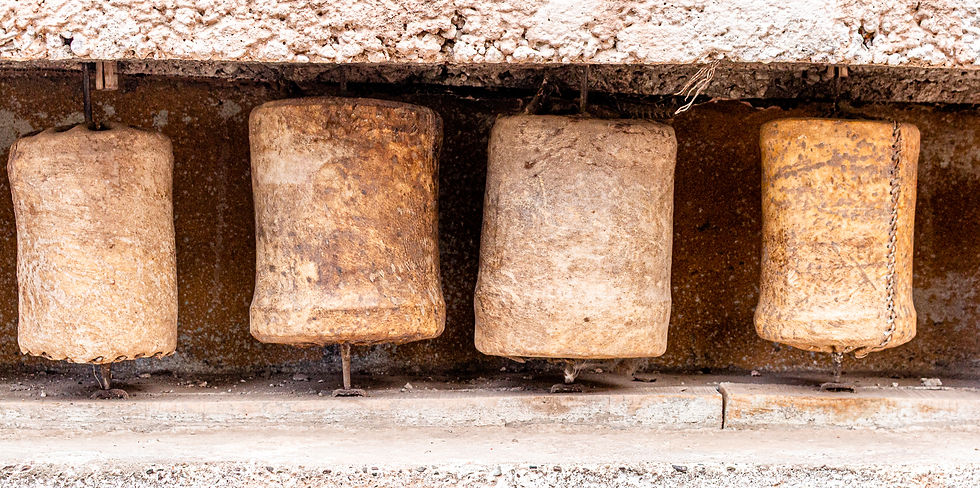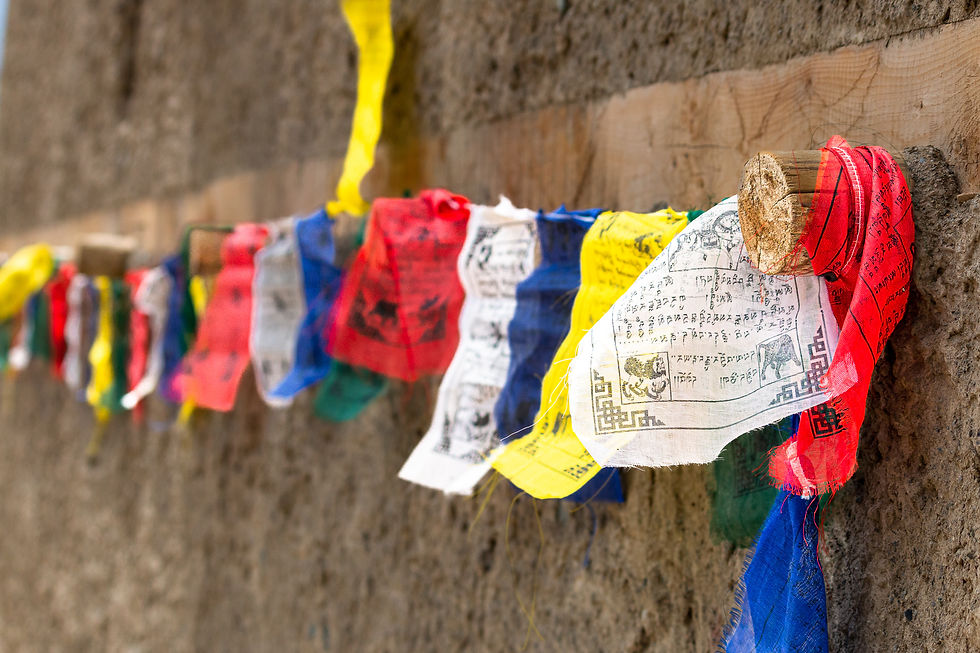What to Know About Ladakh Before You Go
- Rand Blimes

- May 17
- 4 min read
Updated: Oct 24

There is something to be said for just coming at travel as a blank canvas. Without judgement. Without prejudice. Without knowledge.
If you don’t know anything about the place you are standing, you haven’t jumped to any conclusions before you arrived.
There is something to be said for that.
But that’s not what I usually say.
If you can manage to hold the judgement in check and keep your expectations flexible, I think it is much better to do a little background on the places you travel. To know where a place is at, you have to know where it has been.
With that in mind, this post departs from my other posts in that it is purely background. I still think of it as a travel post, but this post gives you a little bit of info to tuck into the back pocket of your brain before you start visiting the high desert of Ladakh, with its monks and monasteries.
Even if you don’t plan to go to Ladakh, maybe this will peak your interest just enough to convince you to learn a little bit more about this part of the world that is every bit as fascinating as it is beautiful.
The Rooftop of Faith: Buddhism in Ladakh
There’s a moment that hits you, somewhere around the third monastery in Ladakh.
You’re standing in a wind-carved courtyard, surrounded by whitewashed walls, the sound of a hundred fluttering prayer flags sounding like gentle applause in the background. You’re watching a crimson-robed monk silently sweep the dust from stone steps that slippered feet have been climbing for centuries. The mountains tower around you, silently witnessing your presence in this place. And you realize, whatever your beliefs: you’re in a holy place.
That’s Ladakh.

A Little Himalayan Tibet in India
Ladakh, tucked between the mighty Himalayas and the Karakoram, is often described as “Little Tibet”—and with good reason. This high-altitude desert is home to a thriving community of Tibetan Buddhists, whose faith and traditions have shaped the landscape for over a thousand years.
Buddhism first arrived in Ladakh around the 2nd century BCE via Kashmir, but it took deep root between the 8th and 11th centuries, when it was revitalized through strong cultural and religious exchanges with Tibet. The result is a region where monasteries (called gompas) crown nearly every other ridge, where Buddhist festivals set the calendar, and where prayer wheels hum beside roads instead of billboards.
Today, Ladakh’s spiritual fabric is woven from the threads of Tibetan Vajrayana Buddhism—specifically the Gelug, Kagyu, Nyingma, and Sakya schools. And while the robes and rituals may vary, they share the same core: compassion, impermanence, and the long path to enlightenment.
A Buddhist Island in a Muslim State
Here’s where things get geopolitically interesting.
Until recently, Ladakh was administratively part of the state of Jammu and Kashmir, a region known globally for its majority-Muslim population and long-standing tensions between India and Pakistan. When we visited in 2016, Ladakh was still officially part of Kashmir.
But Ladakh was always different. Geographically remote. Culturally distinct. Religiously separate.
In 2019, the Indian government officially recognized that difference. It split Jammu and Kashmir into two union territories:
Jammu & Kashmir (still majority Muslim)
Ladakh (majority Buddhist, with a sizable Shia Muslim population in the west)
So while Ladakh shares a border—and plenty of history—with Kashmir, it is not Kashmir anymore. Not in the way most headlines use the term.

Borderlines and Battlefields
Ladakh also borders China’s Tibet Autonomous Region to the east and Pakistan-controlled Gilgit-Baltistan to the west. And in this part of the world, borders don’t just divide—they haunt.
The village of Turtuk, for example—now a quiet, apricot-filled community you can visit near the Nubra Valley—was part of Pakistan until 1971, when India captured the region during an Indo-Pakistani War. The idyllic town of went to sleep one night part of Pakistan, and woke up as part of India.
Many families still have relatives across a border they can no longer cross.
Military checkpoints abound here (and you need a permit to get to Turtuk).
The ghosts of partition linger here, but so do stories of resilience.
Of identities that stretch across borders.
Of a region that has seen its name and flag change, but has somehow stayed itself.
Why This Matters for Travelers
If you're visiting Ladakh—climbing monastery steps, chatting with monks, standing under prayer wheels spun smooth by generations—it helps to know where you are. Not just physically, but historically and spiritually.
You’re not just seeing pretty gompas.
You’re seeing a living branch of Tibetan culture that managed to survive in India when much of it was being erased across the border.
You’re not just driving high mountain passes.
You’re crossing lines that, for the people here, were drawn and redrawn by generals, politicians, and gods.
So yes, come for the monasteries.
Come for the mountain views and the silence and the chanting and the butter lamps.
But know this too: Ladakh is not just a place you visit. It’s a place that teaches you how to look.
At history.
At belief.
At borders.
And at the long, slow path that connects them all.
Because travel encompasses everything.
Here are a couple books you can check out if you want to learn more about Ladakh.
Start with Ladakh: Crossroads of High Asia by Janet Rizvi--A balanced and engaging blend of history, culture, and travel, this book is widely considered the definitive English-language guide to Ladakh’s past and present. Rizvi is both scholarly and readable—perfect for thoughtful travelers.
You could also try A Journey in Ladakh by Andrew Harvey--A spiritual travel memoir from the 1980s, this book blends lyrical prose with personal transformation, centered on a pilgrimage to Ladakh’s monasteries. Some parts feel dated, but it’s still a classic of Himalayan travel literature.



Comments